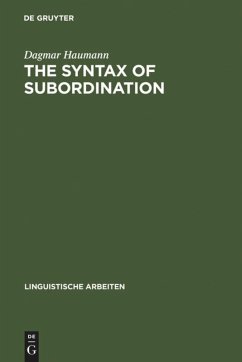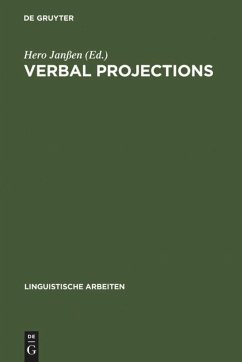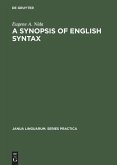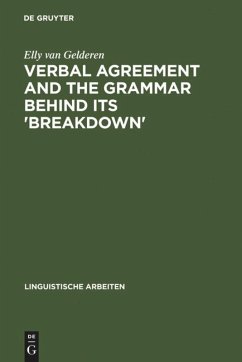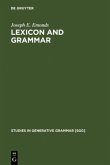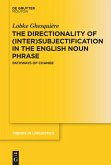This study is concerned with the categorial status of subordinating conjunctions and the internal and external structure of subordinate clauses. Starting out from the categorizations of subordinating conjunctions that prevail in recent generative linguistic theory, namely complementizers and prepositions, and from the division of syntactic categories into lexical and functional ones, the author investigates the lexical and grammatical properties of subordinating conjunctions which are held to account for both the distribution and the architecture of subordinate clauses. Central to this study is the relation between the category subordinating conjunction, the licensing of its projection and the licensing of its complement and specifier position.
Part I is concerned with subordination in early Generative Grammar, the rise of the category C and the categorization of subordinating conjunctions. Part II focuses on recent conceptions of phrase structure, the inventory of syntactic categories, the lexical-functional dichotomy and syntactic movement. Part III is concerned with the lexical properties of complementizers (C), prepositions (P), and a third category of subordinating conjunctions (Subcon) which conflates properties of Cs and Ps. This categorization of subordinating conjunctions is arrived at on the basis of the distribution of the phrases they head and the mechanisms by which these elements license their complement and specifier. Cs, as typical functional heads, license both theirs complement and their specifier on the basis of feature checking mechanisms; Ps, as typical lexical heads, license these positions by theta-marking them. Within SubconP the complement is licensed by feature checking as within CP, and the specifier is licensed by theta-marking as within PP.
Hinweis: Dieser Artikel kann nur an eine deutsche Lieferadresse ausgeliefert werden.
Part I is concerned with subordination in early Generative Grammar, the rise of the category C and the categorization of subordinating conjunctions. Part II focuses on recent conceptions of phrase structure, the inventory of syntactic categories, the lexical-functional dichotomy and syntactic movement. Part III is concerned with the lexical properties of complementizers (C), prepositions (P), and a third category of subordinating conjunctions (Subcon) which conflates properties of Cs and Ps. This categorization of subordinating conjunctions is arrived at on the basis of the distribution of the phrases they head and the mechanisms by which these elements license their complement and specifier. Cs, as typical functional heads, license both theirs complement and their specifier on the basis of feature checking mechanisms; Ps, as typical lexical heads, license these positions by theta-marking them. Within SubconP the complement is licensed by feature checking as within CP, and the specifier is licensed by theta-marking as within PP.
Hinweis: Dieser Artikel kann nur an eine deutsche Lieferadresse ausgeliefert werden.

